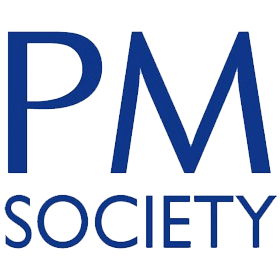What’s the magic formula that makes some clients and agencies click, while others collide rather unsuccessfully and before you know it, they’re both looking for new partners?
Dive into the submissions for the Pharma Digital Partner Award, in last year’s PM Society Digital Awards, and you’ll find plenty of clues.
Agencies nominating someone for this category had to explain why their client was a great agency partner and how they maintained a strong ongoing working relationship to produce outstanding work.
A big clue is in those very criteria. Outstanding work happens because there is a strong relationship. In every submission the client acted as a facilitator, creating an environment, which allowed great work to come through.
So how have they done that?
Firstly, they ensured everyone’s on the same page. All the submissions talked about having a common vision. Given the nature of these awards it was about wanting to produce innovative, effective digital work. And that required the clients to do the ‘hard yards’ internally, championing and upskilling their colleagues on the potential benefits of social media, display, search, chatbots, augmented reality, gamification and whatever else might be under consideration. Some of these clients went as far as organising internal digital education programmes and roadshows with affiliates. This in turn helped avoid medical or legal roadblocks, once significant investment had been made developing strategies and programmes.
The clients also asked the different agencies involved to put aside their partisan instincts and work closely together. This led to co-creation workshops and joint analytics meetings bringing together specialists from the different disciplines. In this way the clients got the best out of all the talent involved and the agencies enjoyed the process too.
These were complex campaigns that required very clear written briefs and tight working protocols, but in each case a pragmatic approach was adopted to ensure they were guided by process, not ruled by it. Also, feedback was clear and consolidated at every twist and turn.
Close and informal communication was, and always is, essential. A balance between email, telephone conferences and most importantly, plenty of face-to-face meetings. One of the agencies said, ‘our client prefers a phone call over a long email.’ That’s music to any account handler’s ears.
The conclusion from all of this is that the agency became an extension of the client’s team and very much a partner not just a supplier. A strong sense of trust leads to a great relationship, which leads to great work, which in turn further builds that trust and so on.
It’s also clear these clients were very demanding and had high expectations but at the same time created a friendly and collaborative atmosphere. Clients get reputations within agencies and you get the sense that staff in these agencies probably ask to work on that account.
So perhaps the formula (although not always easy to pull off) is not so magic after all. As David Ogilvy said many years ago, ‘Clients get the advertising they deserve,’ and in each of these submissions the clients have done all the right things and unquestionably deserved the very best work.
Paul Phillips is a PM Society trainer and consultant. He spent the first half of his career in consumer agencies, prior to setting up the specialist agency VCCP Health, which he led for eight years.
He now runs a workshop for clients called, ‘How to work with and get the best out of your creative agency.’ If you are interested in finding out more, email Jackie@pmsociety.org.uk.
This article was put together with material pulled from a list of nominations for the Pharma Digital Partner Category 2018 that reached the second round of judging. These were Mary Andrews from GSK, Dr Paul Field from Bayer, Kym Jacks-Bryant from Norgine, Kasper Kofod from Novo Nordisk, Chirag Patel from Leo Pharma, Chris Phillips from AbbVie, Matt Scott and Linda Valenta, both from Boehringer Ingelheim. The winner was Kym Jacks-Bryant.
